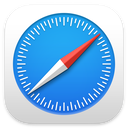Computing and Information Sciences
Class
Explore the foundational concepts of computing and information sciences.
This course provides a comprehensive introduction to the field of computing and information sciences. Over eight modules, students will delve into key topics including programming paradigms, data structures and algorithms, database systems, artificial intelligence basics, and computer networks. Students will gain theoretical knowledge and practical skills that are essential for understanding and working in the field of computer science.
Here is the class outline:
1. Introduction to the CourseGain an overview of computing and information sciences, understand the course objectives, and see how the various topics interconnect. 3 sections
|
|||
|
2. Foundations of Programming ParadigmsInvestigate diverse programming styles including procedural, object-oriented, and functional approaches, exploring their strengths and use cases. 3 sections
|
|||
|
3. Data Structures and Algorithms EssentialsExamine how to efficiently organize data and apply key algorithms for searching, sorting, and problem-solving. 3 sections
|
|||
|
4. Designing Database SystemsLearn fundamental principles of database design, relational modeling, and query techniques, along with an introduction to NoSQL alternatives. 3 sections
|
|||
|
5. Understanding Computer NetworksExplore core networking concepts, protocols, and architectures, gaining insight into how data is transmitted and received across the internet. 3 sections
|
|||
|
6. Artificial Intelligence BasicsDiscover the fundamentals of AI, covering machine learning techniques, neural networks, and the potential real-world applications of these technologies. 3 sections
|
|||
|
7. Practical Applications and IntegrationCombine concepts from previous modules to build and optimize integrated systems, illustrating how programming, data handling, and networks work together. 3 sections
|
|||
|
8. Course Summary and Next StepsReview the course highlights, reinforce core ideas, and explore advanced paths for continued growth in computing and information sciences. 3 sections
|
|||
|




.png?lmsauth=2927ffdeb1756781e31a19b5798b1cc62dc1111d)
(3).png?lmsauth=72ba9edbda03693a9812d57150fdbd1f761c5110)